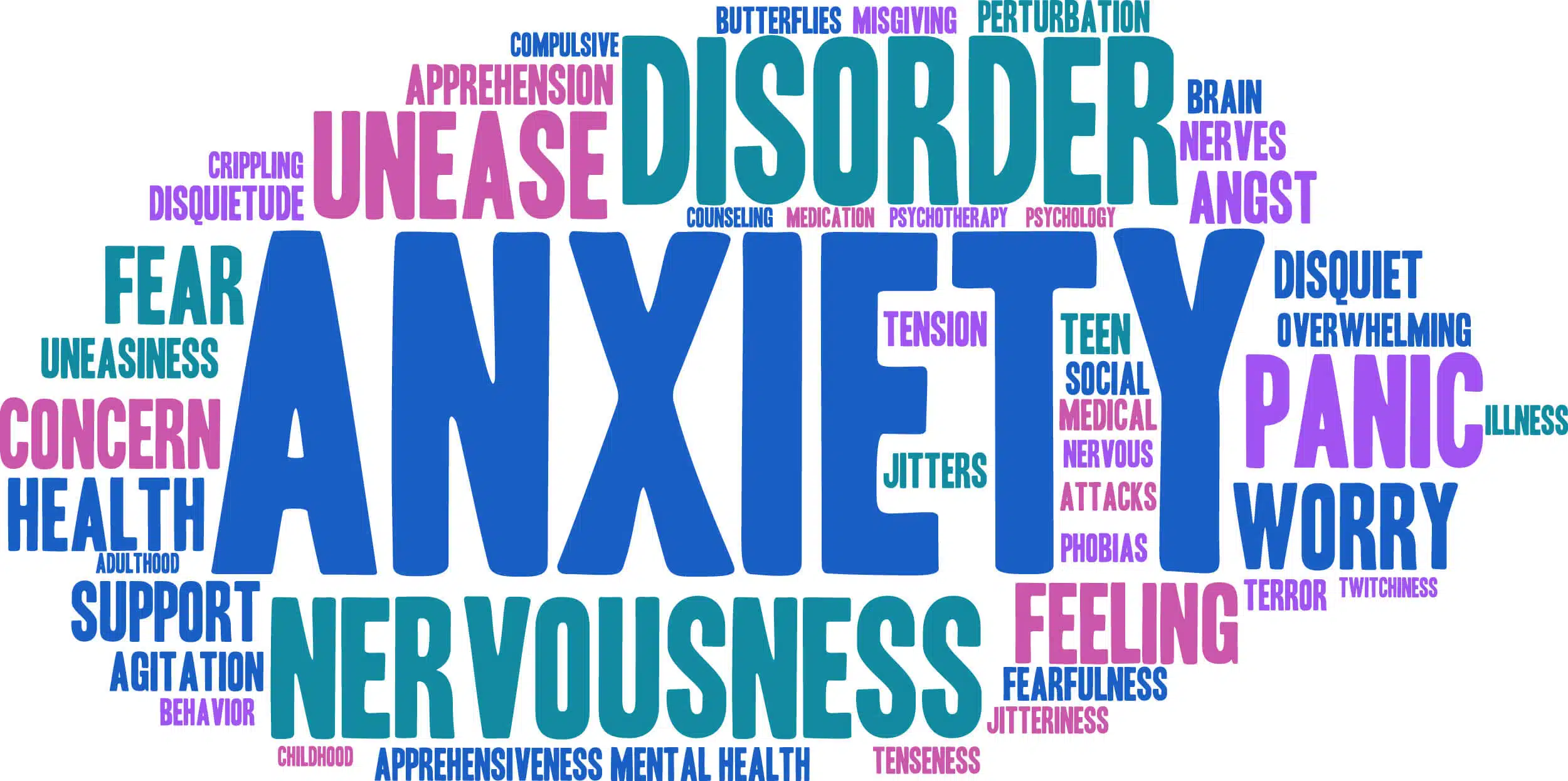
How Do You Deal with Anxiety and Panic Attacks
For anyone with anxiety or who suffers from panic attacks, it seems as though there is always danger surrounding you. You are constantly on guard and can’t seem to get a handle on why. One of the worst feelings in the world is that you feel like you are in danger and you cannot fight against it because it’s invisible.
Anxiety is a mental health disorder that creates feelings of worry, uneasiness, or apprehension about an imminent event (either real or imagined) or something with an uncertain outcome. Panic attacks are an extension of anxiety. When the anxiety reaches a critical mass, a person will have a racing heartbeat, hyperventilation, sweating, trembling, and an inability to calm down.
So, what is the answer? How do we deal with these two issues? Primarily, once anxiety and panic attacks have been diagnosed by a physician, medication and therapy are recommended. Medication can help with situational anxiety – for example, if crowds make you anxious, you can reserve your medication for when you will be in a large crowd – or it can be taken daily if your anxiety is constant. Therapy also offers you the opportunity to learn about the mechanisms of anxiety and panic attacks and ways you can cope.
Diagnosis
If you suspect you have anxiety or may have experience a panic attack, it is essential that you seek out the help of your family physician or a psychiatrist. Without a proper diagnosis, you cannot find proper treatment. Once your health care provider has diagnosed you, he or she can then suggest a course of treatment.
Although there are multiple conditions that fall under the umbrella of anxiety disorders (including OCD and phobias), we will focus on anxiety disorder and panic disorder. Why is diagnosis so important? Because many times people who are unaware of their condition may begin to self-medicate with alcohol, drugs, or other risky behaviors. All they know is that they want to feel better and make the anxiety go away.
Most patients with anxiety have what is called Generalized Anxiety Disorder (GAD). People with generalized anxiety disorder exhibit extreme, unwarranted anxiety or worry, nearly every day for at least six months. They can worry about any number of things like work, family issues, personal health, social interactions, and everyday routines. The fear and anxiety cause substantial problems in their lives, including school (at any age), social interactions, and their work environment.
If you suspect you have anxiety, or someone close to you might have anxiety, keep an eye out for the following signs and symptoms:
- Restless, wound-up, or on-edge
- Easily fatigued
- Can’t focus or mind going blank
- Irritability
- Constant muscle tension
- Trouble controlling feelings of fear or worry
- Difficulty falling or staying asleep, restlessness, or unproductive sleep
If you or someone you know is showing these signs, it is critical to be evaluated by a health care professional.
Patients who suffer from Panic Disorder have recurrent unexpected panic attacks. Panic attacks are “sudden periods of intense fear that come on quickly and reach their peak within minutes. Attacks can occur unexpectedly or can be brought on by a trigger, such as a feared object or situation.”
The physical experience of a panic attack is very unpleasant and can include any or all of the following:
- A pounding or an accelerated heartrate
- Profuse sweating
- Trembling
- Shaking
- Feeling a shortness of breath, a sense of smothering, or feeling choked
- A sense of impending doom
- Out of control emotions
Patients who suffer from panic disorder constantly worry about the next attack and go out of their way to try to prevent future attacks. They will avoid places, people, situations, or behaviors they relate with panic attacks. The constant worry about panic attacks, and the energy spent aiming to avoid attacks, cause considerable problems in numerous areas of the patient’s life.
With both GAD and Panic Disorder, a mental health care provider can evaluate the situation and determine which medications might help the patient.
Medication
A lot of patients will resist taking medications for fear of being on them permanently or becoming addicted – both very real possibilities. However, patients need to weigh the risks versus the benefits and determine what is right for them. Some patients don’t need medication because therapy helps, but those with severe forms of GAD and Panic Disorder need to take medication.
Most medications for anxiety and panic attacks are anti-anxiety medications or anti-depressants. The most common of the anti-anxiety medications are Benzodiazepines (also called benzos). These are sedatives that help relax the tension in your muscles and quiet your mind. Benzodiazepines help treat various anxiety disorders, including panic disorder and generalized anxiety disorder. The most common are the following:
- lorazepam (Ativan)
- alprazolam (Xanax)
- clonazepam (Klonopin)
- chlordiazepoxide (Librium)
- diazepam (Valium)
Benzodiazepines are normally used only short-term. This is because they increase drowsiness and have been shown to cause problems with memory and balance. They can also be habit-forming. It’s critical that you only use these medications until your doctor completes your treatment plan.
Antidepressant medications can be used to treat anxiety, but they don’t work in the moment. It often takes four to six weeks for the medications to take effect. Antidepressants help with anxiety and panic attacks by improving the communication between neurotransmitters and increasing serotonin levels.
There are multiple types of anti-depressants available for treatment of anxiety:
SSRIs
Selective serotonin reuptake inhibitors (SSRIs) work to decrease serotonin levels, “a neurotransmitter that affects mood, sexual desire, appetite, sleep, and memory.” Generally, SSRIs are started at a low dose and gradually increases. Some of the SSRIs used to treat anxiety include the following:
- fluoxetine (Prozac)
- escitalopram (Lexapro)
- paroxetine (Paxil)
- sertraline (Zoloft)
Tricyclics
Tricyclics work just as well as SSRIs for treating generalized anxiety disorder. Research suggests that tricyclics work comparably to SSRIs. Tricyclics are also started at a low dose and then the dose is gradually increased.
Tricyclics used for anxiety include clomipramine (Anafranil) and imipramine (Tofranil).
Tricyclics are older drugs that are prescribed infrequently because newer drugs cause fewer side effects.
MAOIs
Monoamine oxidase inhibitors (MAOIs) are used to treat panic disorder. They increase the number of neurotransmitters which regulate moods. MAOIs are generally used to treat depression but can be used off-label to treat anxiety and panic disorder. The MAOIs used to treat these conditions include the following:
- isocarboxazid (Marplan)
- phenelzine (Nardil)
- selegiline (Emsam)
- tranylcypromine (Parnate)
Like tricyclics, MAOIs are older medications that cause more side effects. MAOIs also have certain restrictions. For example, if you take MAOIs, you can’t eat certain foods, such as cheese and red wine.
When we examine the list of medications prescribed by doctors for panic disorder, there is a lot of overlap. But, just as in anxiety, these medications make it easier to manage panic attacks.
SSRIs
These drugs work to prevent serotonin from being absorbed by nerve cells in the brain. Serotonin is the chemical messenger associated with mood regulation and balancing serotonin levels helps to decrease panic attacks.
SSRIs commonly prescribed for panic disorder include the following:
- fluoxetine (Prozac)
- paroxetine (Paxil)
- citalopram (Celexa)
- fluvoxamine (Luvox)
- escitalopram (Lexapro)
- sertraline (Zoloft)
Serotonin-norepinephrine reuptake inhibitors (SNRIs)
SNRIs are antidepressants that prevent the absorption of both serotonin and norepinephrine, “a chemical messenger involved in the body’s response to stress.”
SNRIs have a low risk of side effects and are among the most widely recommended medications for panic disorder. Venlafaxine (Effexor) is currently the only FDA-approved SNRI for panic disorder.
Tricyclics
Though tricyclics can have more side effects, research suggests they’re very effective in treating panic disorder. Tricyclics work by “increasing levels of serotonin and norepinephrine and blocking acetylcholine, a neurotransmitter associated with anxiety symptoms.”
The tricyclics typically prescribed for panic disorder include the following:
- nortriptyline (Pamelor)
- doxepin (Adapin, Sinequan)
- desipramine (Norpramin)
- clomipramine (Anafranil)
- amitriptyline (Elavil)
- imipramine (Tofranil)
MAOIs
MAOIs were the first antidepressants that work by blocking monoamine oxidase, an enzyme involved in the breakdown of serotonin and norepinephrine. However, they have been known to create serious side effects and are not widely prescribed. If nothing else is working, doctors may prescribe isocarboxazid (Marplan), phenelzine (Nardil), or
tranylcypromine (Parnate).
Benzodiazepines
Benzodiazepines work by slowing down central nervous system function to create a sense of peace and calm. Benzodiazepines are effective in treating symptoms during a panic attack, though they are not generally recommended for long-term use. They do have a risk of creating dependence. Benzodiazepines like alprazolam (Xanax) and clonazepam (Klonopin) can treat short-term symptoms caused by panic disorder.
While all of these medications can certainly help with anxiety and panic attacks, psychotherapy is also a very effective tool.
Therapy
The ultimate goal in therapy is to help patients find ways to understand and cope with their anxiety and panic disorder symptoms. There are various types of psychotherapy that can be used with various results.
Cognitive behavioral therapy (CBT)
CBT helps the patient identify, understand, and change thinking and behavior patterns related to anxiety. Therapists who use CBT may also help their clients develop coping skills, encourage them to journal throughout the week, and move on to exposure therapy if needed.
Exposure Therapy
It is what it sounds like. Exposure therapy “gradually exposes an individual to the feared situation in a safe, controlled environment.” Trying to eliminate the actual fear is the goal. Therapists have the patient repeatedly imagine the feared situation or object and evaluate all possible responses to the stimuli.
Group Therapy
Group therapy can be a successful path for normalizing an individual’s experience through relating to others. Support groups offer patients an opportunity to share experiences and offer one another advice based on past experiences. Participating in group therapy validates the shared understanding of anxiety.
Hypnosis
Hypnosis has a somewhat negative reputation based on what popular culture has portrayed it as. But those who practice it are licensed professionals including doctors, therapists, psychologists, social workers, nurses, or other therapists. Hypnosis gives people a chance to reach a very relaxed state through mindful breathing, guided imagery, or muscle-relaxing techniques. “The hypnotherapist may use imagery or simple verbal suggestions to reduce the severity of anxiety symptoms.” While some patients can see positive results quickly, after one or two sessions, others may need more intensive and frequent sessions. If the hypnosis shows promising results in the patient, a hypnotherapist can teach a patient to practice self-hypnosis.
These therapeutic approaches are all designed to help a patient recognize when anxiety is appearing and find ways to control it. As mentioned, one option is to learn new coping skills.
Coping Skills
Anxiety can happen around a particular situation, may have short-lived symptoms, and usually subsides after the anticipated situation takes place. Anxiety can also strike when an anticipated situation changes suddenly, such as expecting a small party with a few friends only to arrive at a party of 40 people. If your anxiety starts picking up and you fear a full-blown panic attack, use some of these techniques:
Question your thought pattern
Negative thought patterns take root in your mind and create a distorted version of the situation. One way to control your anxiety and avoid panic attacks is to challenge your fears, determine if they’re true, and find a way to take back control.
Practice focused, deep breathing
Focused, deep breathing is an exercise in reframing your reality. When you focus on your breathing, your body stops producing symptoms of anxiety. Breathe in for 4 counts and breathe out for 4 counts for a few minutes. By balancing your breath, your heart rate will slow, and you can calm down.
Use aromatherapy
If you are in the position to do so, aromatherapy can be very relaxing. Whether in oil form, incense, or as a candle, fragrances like lavender, eucalyptus, chamomile, and sandalwood are soothing. Aromatherapy activates certain receptors in your brain, helping to ease your anxiety.

Go for a walk or do 15 minutes of yoga
Sometimes, the best way to stop anxiety and panic attacks in their tracks is to walk away. Take time to focus on your body instead of your mind. This can help relieve anxiety and slow your heartrate.
Write down your thoughts
Oftentimes, anxiety comes from what’s going on in our heads that is just a possibility. When we write down what’s making us anxious, getting it out of our heads and seeing it on paper can make it less intimidating.
Conclusion
Knowing we have anxiety, experiencing panic attacks, or going through both can make daily living incredibly difficult. With the right medical interventions, therapy, coping skills, and medications, people who suffer from anxiety and panic attacks can find relief and a more stable and calm lifestyle.




